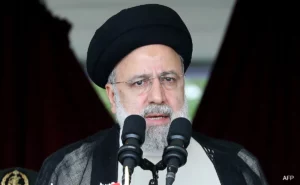US Federal Reserve Cuts Interest Rates After 4 Yrs:Was the Move Political?

Federal rate cut
The recent decision by the U.S. Federal Reserve to cut interest rates by 50 basis points marks a significant shift in its monetary policy, occurring for the first time in four years. This move, announced on September 18, 2024, has raised questions about whether it was influenced by political considerations, especially with the upcoming presidential election on November 5.
Overview of the Rate Cut
The Federal Open Market Committee (FOMC) voted to lower the federal funds rate to a range of 4.75% to 5%, a notable reduction from the previous two-decade high of 5.25% to 5.50% that had been maintained for over a year in an effort to combat inflation. The decision reflects the Fed’s increased confidence that inflation is moving towards its target of 2%, with recent data showing inflation at 2.5% as of August 2024, down from previous highs.The Fed’s statement indicated that while inflation remains somewhat elevated, the balance of risks related to employment and inflation objectives appears more stable than before. This suggests that the central bank is now more concerned about a potential slowdown in the labor market than about rising inflation.
Economic Context
The backdrop for this decision includes a cooling labor market and signs of easing inflation. After aggressive rate hikes aimed at controlling inflation, which peaked in mid-2022, the Fed has faced increasing pressure to adjust its stance as economic indicators have shifted. Job gains have slowed, and while unemployment remains low, projections indicate it could rise to 4.4% by the end of the year.This rate cut is expected to support economic growth and stabilize the job market amidst fears of a broader economic downturn. The Fed’s decision aligns with market expectations, which had shifted towards anticipating a larger cut than previously thought possible.
Political Implications
The timing of the Fed’s decision has sparked debate regarding its potential political motivations. With the presidential election approaching, some critics argue that the Fed’s actions could be perceived as an attempt to bolster economic conditions favorable to the incumbent administration or influence voter sentiment. Former President Donald Trump has publicly criticized the timing of such cuts so close to an election, suggesting they should not occur during this period due to potential political implications.Democratic senators have also weighed in, urging the Fed to act decisively in light of economic conditions, implying that failure to do so could harm the economy further. This dynamic raises questions about the independence of the Federal Reserve and whether it can operate free from political pressures.
Conclusion
The Federal Reserve’s recent interest rate cut represents a pivotal moment in its monetary policy strategy, reflecting a shift towards supporting economic growth amid signs of a softening labor market and easing inflation. While officials maintain that their decisions are based on economic data and trends, the proximity of this move to an election has led to speculation about potential political motivations behind it.As Chair Jerome Powell emphasized in his post-announcement press conference, the Fed’s focus remains on achieving maximum employment and stable prices. However, as the political landscape evolves leading up to the election, scrutiny over the Fed’s decisions will likely continue, highlighting the delicate balance between economic policy and political realities





